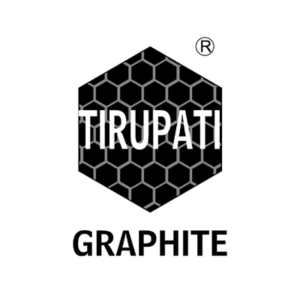The shift to renewable energy is accelerating, and graphite is at the heart of this transformation. While its role in battery storage for solar and wind power is well recognised, another fast-growing market is emerging—hydrogen fuel cells. This technology, long considered a promising alternative energy source, is experiencing renewed investment and interest. With its critical applications in fuel cells, graphite is becoming an indispensable component of the clean energy future.
Hydrogen fuel cells are gaining traction as a sustainable energy solution, complementing electrification strategies. Governments and industries worldwide are investing heavily in alternative energy technologies, recognising that renewable sources like solar and wind may need supplementary solutions. Until innovations like nuclear fusion become commercially viable, hydrogen offers a scalable and efficient clean energy alternative. The graphite industry is capitalising on this opportunity, supplying key components for hydrogen fuel cells and maintaining a strong position in the future energy market.
Hydrogen as an energy source has been explored for decades, but new technological advances and government incentives are pushing it toward mainstream adoption. Storage and infrastructure challenges have historically hindered hydrogen’s progress, but increased funding is now enabling large-scale implementation. With the development of necessary infrastructure underway, hydrogen is poised to play a significant role in global energy markets.
Fuel cells are the driving force behind hydrogen’s viability as a power source. Already used in diverse applications—from backup power for buildings to transportation solutions such as forklifts, buses, and submarines—fuel cell technology is continually advancing. High-purity graphite is essential for critical fuel cell components, including bipolar plates, gas diffusion layers, and catalyst substrates. Companies like Semco are closely following and contributing to the growing industrial applications of graphite in this field.
The automotive industry has long relied on graphite for its high-performance properties, particularly in high-friction applications like brakes. However, as electric vehicle (EV) adoption grows, range limitations remain a challenge. Hydrogen fuel cells offer a compelling solution, enabling vehicles to achieve driving ranges comparable to traditional combustion engines. This is particularly beneficial for commercial applications, where vehicles travel long distances and require quick refuelling. As a result, fuel cell technology is gaining popularity in mass transit systems worldwide, with hydrogen-powered buses operating in multiple regions, including the UK and the US.
Leading automotive manufacturers are embracing fuel cell technology. Companies such as Daimler and Honda have already introduced fuel cell vehicles, while industry giants like Toyota and Hyundai are following suit. As more manufacturers explore hydrogen as a viable energy source, demand for high-purity graphite in fuel cells will continue to rise.
At the core of fuel cell technology lies the electrochemical process that converts hydrogen into electricity. Bipolar plates, crucial to this process, require highly conductive and durable materials—an area where graphite excels. Its superior electrical and thermal conductivity, combined with corrosion resistance and lightweight properties, make it ideal for these components. Additionally, graphite plays a vital role in gas diffusion layers, ensuring optimal fuel distribution, and acts as a catalyst substrate to enhance reaction efficiency.
The sustainability of fuel cells is a key driver of their adoption. Unlike combustion engines, fuel cells generate electricity without burning fuel, producing only water and heat as by-products. This makes them one of the cleanest energy solutions available. Their high efficiency, durability, and low maintenance requirements further strengthen their appeal as a long-term energy source.
Graphite continues to play a foundational yet often understated role in emerging green technologies. As hydrogen fuel cells gain momentum, the graphite market is set to expand, supporting this growing sector with essential materials. Semco Carbon remains at the forefront of this evolution, providing high-quality graphite solutions to meet the increasing demand for clean and efficient energy technologies.
Tirupati Graphite PLC (LON:TGR) is a fully integrated specialist graphite and graphene producer, with operations in Madagascar and Mozambique. The Company is delivering on this strategy by being fully integrated from mine to graphene. Its global multi-location operations include primary mining and processing in Madagascar, hi-tech graphite processing in India to produce specialty graphite, and a state-of-art graphene and technology R&D center to be established in India.


